
Wine Culture and Information since 2002 - Volume 22
 Wine Culture and Information since 2002 - Volume 22 |
|
Issue 102, December 2011 |
Contents |
|
|
The Factors Making a Wine |
|
Terroir is important. Grapes are important. What you do in a vineyard is important. The wine maker is important. What you do in the winery is important. And it is also important the name you put in the label of a bottle, from the producer's name to the name of the production area. This is undeniable: a renowned and celebrated name makes a difference. Notwithstanding William Shakespeare who wanted Juliet to say that a name, after all, is not that important and a rose would smell just the same even in case we would call it with a different name. Juliet was certainly right, however marketing and success rules follow a pretty different philosophy. As for wine, no matter how this can be important, the name is not a factor really making a wine. It helps to sell it and there is no doubt about this. This is something well known to producers who work in the less known areas - and who however make excellent products - how a name could help their commercial success. There are many factors allowing the creation of a good wine and it is hard to tell what is the most important one, as each of them has the chance to express itself also thanks to the presence of the other ones. Everyone agrees on the fact grape quality is essential in order to make a great wine: using a low quality raw matter, all you can do is to make a wine having the same low quality. Making use of quality grapes does not ensure the production of a quality wine in case are adopted procedures or methods which would destroy this advantage. From quality grapes you can get a quality wine as well as a bad quality wine. From bad quality grapes you can get a bad quality wine, or a decent wine in case the wine maker is sufficiently good to do some kind of “magic tricks”. To make a good wine you need a good technique, as well as a good quantity of art and talent, and in particular, are these two latter factors to make an exciting wine having a remarkable personality and value. For this reason, the wine maker is important. And it is important the knowledge, the technical skill, personal philosophy of interpreting a territory and its grapes, the morality with which he or she makes a genuine and healthy wine. It is not a matter of making use of chemistry or not - in any case, this will always be present although in different ways and forms - indeed to the way a producer cultivates grapes and makes wine, factors anticipating the respect he or she has for customers and wines. As already said, producers and wine makers do not have good chances to make a great wine in case the raw matter - the grape - is of low quality. Quality of grapes is determined by many factors, not only by soil and territory, as well as terroir, but also by factors strictly associated to viticulture, that is, agronomic factors. If the wine maker is the interpreter of grapes, when they reach the winery, the agronomist certainly is the interpreter of the territory and the respect for vineyard. In other words, it is the technical figure ensuring the quality of grapes and their expressive potentials. In the vineyard, as well as in the winery, everyone follows his or her own productive philosophy, frequently based on a specific school of thought, sometimes very extreme as to be considered as orthodox religious movements. I am not criticizing the wine making or viticultural methods used by each producer, but it is also true some of them - in particular the most convinced and fervent ones - believe in their ideas is such a lively way, ending in ideological fights, each one firmly supporting their ideas and positions. Wines from organic agriculture, biodynamic wines, conventional wines, natural wines - as to mention the most recurring schools of thought - are viticultural and wine making methods supported with proud by producers who use them for their wines. If we listen to each producer, each of them is ready to support the method used for the wines and will say it is the best one, mentioning countless thesis in order to support his or her thought. And, after all, this is very normal: in case the producer does not believe to what he or she makes and the way it is made, also wine quality would suffer from this. I am not trying to doubt the good faith of those who support a specific viticultural or wine making method, however sometimes it is hard to understand the subtle difference among sincerity, passion, speculation, proud and arrogance. Of course, the wine in the glass, evaluated through the nose and the judgment of senses, makes you understand a lot about the one who made it and how it was made. Taking precautions is however and always appropriate. It is like in past times when the first so called organic wines were about to be commercialized. They did not always had an impeccable quality, they frequently had embarrassing faults, but they however had - according to what their producers were saying - the quality of being “organic”, that is the most genuine wine one could ever have in a glass. Times have changed and the ones who were making a viticultural or wine making method the only commercial factor have understood - also thanks to the need of consumers, more and more exacting - that besides good intentions and genuineness, you also need quality expressed by facts. Then there is territory and, in particular, terroir, a term on which there is much speculation and which will becoming the new “fashion in wine”, one of the many destined to become a trendy subject. Let's say this straight: terroir is important and plays an essential role, fundamental and important for the personality and quality of a wine. The French have made of terroir a winning commercial strategy, while emphasizing its importance, not only with words, but also with facts. There are many factors making a wine, including words, productive philosophy, schools of thought or a specific elitist behavior: something which is true both for producers and consumers. Sometimes, among the factors making a wine, we also find the fashions of the moment and the names of wine and producers which becomes renowned for reasons sometimes hard to understand. Because, like the emperor Nero of the extraordinary Ettore Petrolini said after having harangued the people of Rome enraged for the famous fire: «Lo vedi all'urtimo com'è er popolo? Quando s'abbitua a ddi' che sei bravo, pure che non fai gnente, sei sempre bravo» (Do you see how the people are, after all? When they get used to say you are good, even in case you are not doing anything, you are good anyway). Antonello Biancalana
|
||||
Mature Sparkling WinesWines usually associated to holidays and to special moments, bubbles are frequently consumed soon after their purchase. Nevertheless, mature sparkling wines can give, with time, special emotions |
|
Sparkling wines, for most of consumers, are uncorked in particular occasions, to celebrate a particular event and they are bought soon before their consumption. Witness of this behavior are the sales that mainly concentrates in certain periods of the year, when in shops shelves are filled with this style of wine. Nevertheless, sparkling wines are very versatile, and they can certainly have a special place in the table to be paired to a whole meal: from appetizer to dessert, sparkling wines always suggest a good chance to be uncorked. There are few consumers who think about letting them to rest in the cellar, or however to give them some time in order to develop complex qualities, therefore giving them a new sensorial and organoleptic dimension. It should be said mature sparkling wines are not always appreciated: their sensorial profile frequently changes in a radical way, frequently becoming a distant memory of what people mainly expect from a wine of this type. It should be said not all the sparkling wines can be aged for a long time in bottle, a quality which is mainly determined by the technique used for production. As it is commonly known by most of wine lovers, most of sparkling wines are produced with two techniques very different one from each other - classic method and Charmat method - and both are based on the same principle, that is the refermentation of a wine. This process is started by using the same principle in both method, however the way with which the methods are completed is radically different. The refermentation is started by simply adding to a wine a mixture of yeast, sugar and substances capable of activating the yeast. Sugar is essential to give yeast indispensable substances for its activity, as in a dry wine the presence of sugar is virtually absent. The way with which the refermentation and aging is continued is however different in both cases. In the Charmat method - also known as Martinotti method - the refermentation is done in a closed tank, whereas in the classic method the refermentation is done in a bottle. The final result is however different: each method has specific characteristics as to give the wine specific organoleptic quality and personality, although, in both cases, producing effervescence in wine. The choice of a production method is fundamental for the type of sparkling wine to make, and it should be noticed not all the grapes give their best with one method or the other one. There are grapes, for example, giving pleasing aromatic qualities to the sparkling wine provided it is produced with the Charmat method, whereas the same grapes could give insignificant results in case they are being used with the classic method. The wine destined to the production of a sparkling wine must be specifically produced for this purpose. Wines suited for the production of sparkling wine must have - in general terms - two fundamental characteristics: an evident acidity and a modest quantity of alcohol. These two characteristics, which would make any table wine unpleasing, are in fact fundamental in order to make a sparkling wine with balanced gustatory qualities. Acidity will be fundamental for the balance of the liqueur d'expédition, in which can also be found sugar, an element always found in classic method sparkling wines with the exception of the so called “pas dosé” wines, that is the ones in which the mixture of sugar is not added at the end of the refermentation. The low quantity of alcohol in a base wine is essential in order to avoid a final product with an excessive quantity of alcohol - therefore causing a significant sensorial unbalance - as during refermentation the yeast, besides enriching wine's organoleptic qualities, will also produce alcohol.
The two production methods, despite their final goal is to give effervescence to a wine because of the solubilization of carbon dioxide, are made of procedures and method very different one from each other. Let's try to understand them, although in a quite short way, however enough to understand their differences. Of the two methods, the most simple and immediate one is the so called Charmat method. This method was invented in 1895 by Federico Martinotti, at the time he was the headmaster of the Royal School of Enology of Asti. It will be in 1907 this method will become very famous, when the French engineer Eugène Charmat studied and improved Federico Martinotti's method. This method of production is today known as “Charmat method” or “Martinotti method”, and it is based on the use of a closed tank, that is a hermetically sealed container and in which will develop a certain pressure during the refermentation of the wine which will then become a sparkling wine. This method provides for three different methods - however all based on the same technology - each destined to the production of a sparkling wine with specific characteristics. The three methods are respectively called Short Charmat - or simply Charmat - Long Charmat and Charmat for sweet and aromatic wines, the latter used for the production of the famous Asti and Brachetto d'Acqui. The two latter methods derive - as a matter of fact - from Short Charmat, properly adapted in order to give the wine specific organoleptic qualities. Before understanding these two “adapted” methods, let's see, in short, the phases characterizing the short Charmat method or simply “Charmat”. The process starts with the production of a base wine - which can also be made of more wines - then transferred to the container of the closed tank. The wine is added with a mixture of yeast, sugar and substances which will favor the activation of yeast. The tank is then hermetically sealed and yeast, thanks to the presence of sugar, will start the second fermentation in the wine. Fermentation, as it is commonly known, produces alcohol and, as a byproduct, carbon dioxide that, as it cannot get out of the closed tank, it will saturate the container and it will be subsequently solubilized to the wine, producing the characteristic effervescence. The refermentation inside the tank has a variable duration from few weeks to some months, generally 3 and not more than 6 months. At the end of the fermentation, the wine - which at this point is a sparkling wine - is separated from the sediments and filtered, it is then added, if needed, a liqueur d'expédition, therefore bottled in isobaric conditions, that is at the same pressure inside the tank in order not to lose the precious carbon dioxide. This rapid method of production however gives a wine with bubbles of a pretty big size, when compared to those produced by the classic method. The “long” Charmat method differs from the short method for the duration of the process. This variation was invented by wine maker Nereo Cavazzani at the end of the 1970s. Long Charmat method - also called Cavazzani method - provides for a refermentation and a subsequent aging in a closed tank for a period from 6 to 12 month. The duration is not the only difference with the “short” method. The closed tank used for the Cavazzani method is equipped with screw agitators which will bring the sediments of fermentation in suspension. This favors the enrichment of wine's body and gives it a more complex sensorial profile, a quality generally common in sparkling wines produced with the classic method. The Charmat method for sweet wines is based on the fermentation of the must produced from aromatic grapes - such as Muscat Blanc and Brachetto - while avoiding the completion of fermentation therefore obtaining a naturally sweet wine and with a low alcohol by volume. It should be noted in this method it is being used the must instead of a wine. The classic method is more complex and, in particular, takes very long times, even years, in order to obtain sparkling wines of high quality and with complex organoleptic characteristics. The method provides for the refermentation of the base wine in a bottle, the very same bottle which will be used for its commercialization. The bottle is sealed with a crown cap, in order to ensure a perfect seal even with the high pressure developing inside the bottle during fermentation. The base wine is added with a mixture of yeast and sugar, then bottled and allowed to rest for a long period in order to have time doing its precious job. Carbon dioxide produced during fermentation rapidly saturates the bottle therefore causing the subsequent solubilization in the wine and making it effervescent. Sediments of fermentation - the precious secret of classic method - enrich the wine by giving it body and, in particular, complex and remarkable organoleptic qualities. The chances for a good aging of a sparkling wines depend on many factors, first of all, the method used for the production. Grape varieties play and important role, as well as acidity and the quantity of alcohol - just like in white wines - and contribute to the keeping of a sparkling wine. The aging of a sparkling wine on its fermentation sediments - before dégorgement - represents another element which favors a better keeping, a factor which is also determined by the duration of time. This condition is typical in classic method sparkling wines, which can be aged in the bottle for many years before dégorgement, whereas for those produced with the Charmat method, sediments - besides being filtered - stay in contact with the wine for few months. Among the most important factors for the keeping of a sparkling wine, we have oxygen, or, better to say, the absence of oxygen. In the bottle of a classic method sparkling wine, oxygen is virtually absent, as the “empty” space is completely occupied by carbon dioxide. This condition avoids the oxidation of wine and - in theory - ensures the sparkling wine a virtually endless keeping. Oxygen gets in contact with the classic method sparkling wine at the moment of dégorgement, the indispensable operation with which the sediment is expelled in order to get a limpid wine. From this moment on, the small quantity of oxygen inside the bottle will start a slow but however unavoidable oxidation, a condition that - as a matter of fact - allows the aging and the organoleptic development of the wine. It should be said a mature sparkling wine does not always meet the appreciation of consumers. The qualities developing with time, give these wines a dimension of remarkable sensorial interest, most of the times far away from what one would expect from a wine of this type. In mature sparkling wines, in fact, it will be perceived a more pronounced roundness, although keeping an evident acidity, and aromas will develop tertiary qualities recalling smells of jams, honey and dried flowers, as well as strong aromas of bread crust and dried fruits. To the taste, the typical acidity is added to a pretty evident roundness, a characteristic not always appreciated in this style of wine. The keeping of effervescence - and therefore of the pressure inside the bottle - depends of the sealing capacity of the cork and its permeability. Sometime happens that a mature sparkling wine loses most of its effervescence, greatly influencing taste and balance. Also the color, because of the effect of oxidation, gets deeper hues of intense and brilliant golden yellow, a color which can also be observed in nuances. Finally, it should be noticed sparkling wines most suited to the keeping in bottle are the ones produced with the classic method, capable of aging for some years. Among Charmat sparkling wines, the most longeval ones are those produced with the “long” method, the least longeval ones are those produced with the “aromatic sweet wines” method.
|
||||||||||||
Wines of the Month |
|
|
|
Score legend Prices are to be considered as indicative. Prices may vary according to the country or the shop where wines are bought |
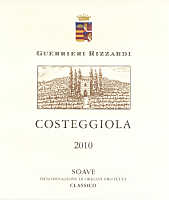
|
|
Soave Classico Costeggiola 2010 |
|
| Guerrieri Rizzardi (Veneto, Italy) | |
| Grapes: Garganega (70%), Chardonnay (30%) | |
| Price: € 10.00 | Score: |
| Soave Classico Costeggiola shows a pale straw yellow color and nuances of straw yellow, very transparent. The nose denotes intense, clean, pleasing and refined aromas that start with hints of apple, plum and hawthorn followed by aromas of pineapple, citrus fruits, almond and broom. The mouth has good correspondence to the nose, a crisp attack and however balanced by alcohol, good body, intense flavors, pleasing roundness. The finish is persistent with flavors of apple, plum and pineapple. Soave Classico Costeggiola ages in steel tanks. | |
| Food Match: Mushroom soups, Pasta and risotto with fish, Broiled fish | |
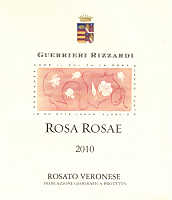
|
|
Rosa Rosae 2010 |
|
| Guerrieri Rizzardi (Veneto, Italy) | |
| Grapes: Corvina (90%), Rondinella (5%), Marcobona (5%) | |
| Price: € 10.00 | Score: |
| Rosa Rosae shows a pale cherry pink color and nuances of onion skin pink, transparent. The nose denotes intense, clean, pleasing and refined aromas which start with hints of raspberry, strawberry and cherry followed by aromas of peach, cyclamen, rose and plum. The mouth has good correspondence to the nose, a crisp attack and however balanced by alcohol, good body, intense flavors, agreeable. The finish is persistent with flavors of raspberry, cherry and strawberry. Rosa Rosae ages for 3 months in steel and cement tanks. | |
| Food Match: Stuffed pasta, Roasted fish, Fish soups, Sauteed white meat | |
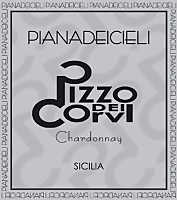
|
|
Pizzo dei Corvi 2010 |
|
| Pianadeicieli (Sicily, Italy) | |
| Grapes: Chardonnay | |
| Price: € 9.00 | Score: |
| Pizzo dei Corvi shows a pale golden yellow color and nuances of straw yellow, very transparent. The nose reveals intense, clean, pleasing and refined aromas that start with hints of plum, banana and citrus fruits followed by aromas of acacia, broom, apple, pear, hawthorn and hints of vanilla. The mouth has good correspondence to the nose, a crisp attack and however balanced by alcohol, good body, intense flavors, pleasing roundness. The finish is persistent with flavors of banana, plum and apple. A part of Pizzo dei Corvi ages in barrique. | |
| Food Match: Pasta with fish and mushrooms, Roasted white meat, Roasted fish | |
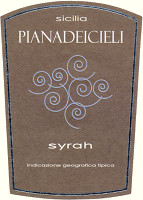
|
|
Syrah 2009 |
|
| Pianadeicieli (Sicily, Italy) | |
| Grapes: Syrah | |
| Price: € 8.50 | Score: |
| This Syrah shows an intense ruby red color and nuances of ruby red, little transparency. The nose denotes intense, clean, pleasing and refined aromas which start with hints of black cherry, black currant and plum followed by aromas of violet, blueberry, vanilla, black pepper, cocoa, mace and eucalyptus. The mouth has good correspondence to the nose, a tannic attack and however balanced by alcohol, good body, intense flavors, agreeable. The finish is persistent with flavors of black cherry, black currant and plum. A part of this Syrah ages in barrique. | |
| Food Match: Broiled meat and barbecue, Roasted meat, Braised and stewed meat, Hard cheese | |
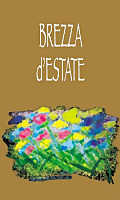
|
|
Colli Tortonesi Timorasso Brezza d'Estate 2009 |
|
| Cascina I Carpini (Piedmont, Italy) | |
| Grapes: Timorasso | |
| Price: € 30.00 | Score: |
| Colli Tortonesi Bianco Brezza d'Estate shows a pale golden yellow color and nuances of straw yellow, very transparent. The nose denotes intense, clean, pleasing and refined aromas which start with hints of apple, hazelnut and plum followed by aromas of citrus fruits, hawthorn, honey, hay, ripe peach and mineral. The mouth has good correspondence to the nose, a crisp attack and however balanced by alcohol, good body, intense flavors, pleasing roundness. The finish is persistent with flavors of apple, hazelnut and plum. Colli Tortonesi Bianco Brezza d'Estate ages in steel tanks and ages in bottle for at least 18 months. | |
| Food Match: Pasta and risotto with fish, Broiled fish, Mushroom soups, Broiled white meat | |
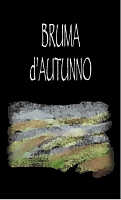
|
|
Colli Tortonesi Barbera Superiore Bruma d'Autunno 2006 |
|
| Cascina I Carpini (Piedmont, Italy) | |
| Grapes: Barbera | |
| Price: € 25.20 | Score: |
| Colli Tortonesi Barbera Superiore Bruma d'Autunno shows an intense ruby red color and nuances of ruby red, little transparency. The nose reveals intense, clean, pleasing, refined and elegant aromas which start with hints of cherry, plum and pomegranate followed by aromas of violet, blueberry, vanilla, tobacco, pink pepper, blackberry, graphite, chocolate, mace and menthol. The mouth has good correspondence to the nose, a slightly tannic attack and however balanced by alcohol, good body, intense flavors, pleasing crispness. The finish is persistent with flavors of cherry, plum and pomegranate. Colli Tortonesi Barbera Superiore Bruma d'Autunno ages for 14 months in cask followed by 12 months of aging in bottle. | |
| Food Match: Roasted meat, Braised and stewed meat with mushrooms, Hard cheese | |

|
|
Valdobbiadene Prosecco Superiore Brut 5 Grammi 2010 |
|
| Malibran (Veneto, Italy) | |
| Grapes: Prosecco | |
| Price: € 13.10 | Score: |
| Valdobbiadene Prosecco Superiore Brut 5 Grammi shows a brilliant greenish yellow color and nuances of greenish yellow, very transparent, fine and persistent perlage. The nose reveals intense, clean, pleasing and refined aromas which start with hints of pear, peach and wistaria followed by aromas of pineapple, hawthorn, tangerine and apple. The mouth has good correspondence to the nose, an effervescent and crisp attack, however balanced by alcohol, good body, intense flavors, agreeable. The finish is persistent with flavors of peach, pear and pineapple. Valdobbiadene Prosecco Superiore Brut 5 Grammi is produced in closed tank. | |
| Food Match: Aperitifs, Crustacean appetizers, Risotto with vegetables and fish, Sauteed fish | |

|
|
Valdobbiadene Prosecco Superiore Brut Ruio 2010 |
|
| Malibran (Veneto, Italy) | |
| Grapes: Prosecco | |
| Price: € 9.00 | Score: |
| Valdobbiadene Prosecco Superiore Brut Ruio shows a brilliant greenish yellow color and nuances of greenish yellow, very transparent, fine and persistent perlage. The nose denotes intense, clean, pleasing and refined aromas that start with hints of apple, plum and wistaria followed by aromas of pineapple, broom, white rose, pear, peach and lemon. The mouth has good correspondence to the nose, an effervescent and crisp attack, however balanced by alcohol, good body, intense flavors, agreeable. The finish is persistent with flavors of apple, plum and peach. Valdobbiadene Prosecco Superiore Brut Ruio is produced with the Charmat method. | |
| Food Match: Aperitifs, Pasta and risotto with fish and crustaceans, Sauteed fish | |

|
|
Sagrantino di Montefalco Colle Grimaldesco 2007 |
|
| Tabarrini (Umbria, Italy) | |
| Grapes: Sagrantino | |
| Price: € 25.00 | Score: |
| Sagrantino di Montefalco Colle Grimaldesco shows a deep ruby red color and nuances of ruby red, little transparency. The nose reveals intense, clean, pleasing, refined and elegant aromas which start with hints of blackberry, plum and violet followed by aromas of black cherry, blueberry, vanilla, tamarind, tobacco, cocoa, mace, pink pepper and menthol. The mouth has good correspondence to the nose, a tannic attack and however balanced by alcohol, full body, intense flavors, agreeable. The finish is persistent with flavors of blackberry, black cherry and plum. Sagrantino di Montefalco Colle Grimaldesco ages for 30 months in cask followed by 6 months of aging in bottle. | |
| Food Match: Game, Roasted meat, Stewed and braised meat, Hard cheese | |

|
|
Sagrantino di Montefalco Colle alle Macchie 2005 |
|
| Tabarrini (Umbria, Italy) | |
| Grapes: Sagrantino | |
| Price: € 40.00 | Score: |
| Sagrantino di Montefalco Colle alle Macchie shows a deep ruby red color and nuances of ruby red, impenetrable to light. The nose reveals intense, clean, pleasing, refined and elegant aromas which start with hints of blackberry, plum and dried violet followed by aromas of blueberry, violet, vanilla, tobacco, chocolate, leather, mace, graphite and menthol. The mouth has good correspondence to the nose, a tannic attack and however balanced by alcohol, full body, intense flavors, pleasing roundness. The finish is very persistent with long flavors of blackberry, plum and black cherry. Sagrantino di Montefalco Colle alle Macchie ages for 24 months in barrique. | |
| Food Match: Game, Roasted meat, Braised and stewed meat, Hard cheese | |

|
|
Prosecco Treviso Extra Dry Il Prosecco 2010 |
|
| Battistella (Veneto, Italy) | |
| Grapes: Prosecco | |
| Price: € 23.00 | Score: |
| Prosecco Treviso Extra Dry Il Prosecco shows an intense greenish yellow color and nuances of greenish yellow, very transparent, fine and persistent perlage. The nose denotes intense, clean and pleasing aromas which start with hints of apple, pear and broom followed by aromas of wistaria, pineapple and hawthorn. The mouth has good correspondence to the nose, a slightly sweet and effervescent attack, however balanced by alcohol, good body, intense flavors, pleasing crispness. The finish is persistent with flavors of apple, pear and pineapple. Prosecco Treviso Extra Dry Il Prosecco is produced in closed tank. | |
| Food Match: Aperitifs, Fish appetizers, Risotto with crustaceans, Sauteed crustaceans | |
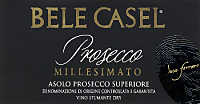
|
|
Asolo Prosecco Superiore Dry Millesimato 2010 |
|
| Bele Casel (Veneto, Italy) | |
| Grapes: Prosecco | |
| Price: € 10.00 | Score: |
| Asolo Prosecco Superiore Dry Millesimato shows a brilliant greenish yellow color and nuances of greenish yellow, very transparent, fine and persistent perlage. The nose reveals intense, clean, pleasing and refined aromas which start with hints of pear, apple and wistaria followed by aromas of citrus fruits, pineapple, broom, peach, tangerine and hawthorn. The mouth has good correspondence to the nose, an effervescent and crisp attack, however balanced by alcohol, good body, pleasing sweetness. The finish is persistent with flavors of pear, apple and pineapple. Asolo Prosecco Superiore Dry Millesimato is produced with the Charmat method. | |
| Food Match: Semifreddo, Cream desserts, Fruit salad | |
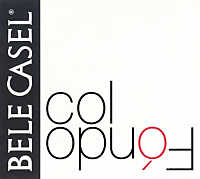
|
|
Asolo Prosecco Frizzante Colfondo 2010 |
|
| Bele Casel (Veneto, Italy) | |
| Grapes: Prosecco | |
| Price: € 10.00 | Score: |
| Asolo Prosecco Frizzante Colfondo shows an intense greenish yellow color and nuances of greenish yellow, hazy, fine and persistent perlage. The nose reveals intense, clean, pleasing, refined and elegant aromas which start with hints of pear, apple and wistaria followed by aromas of yeast, bread crust, pineapple, lemon, mineral, hawthorn, plum and almond. The mouth has good correspondence to the nose, a crisp and effervescent attack, however balanced by alcohol, good body, intense flavors, pleasing roundness. The finish is persistent with flavors of pear, pineapple and lemon. Asolo Prosecco Frizzante Colfondo referments and ages on its lees for 3 months. It is advised to drink this wine with its lees by gently shaking the bottle before consumption. | |
| Food Match: Vegetable and mushroom soups, Pasta with fish and crustaceans, Broiled crustaceans | |
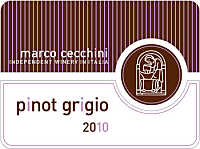
|
|
Pinot Grigio Vigneto Bellagioia 2010 |
|
| Cecchini Marco (Friuli Venezia Giulia, Italy) | |
| Grapes: Pinot Gris | |
| Price: € 12.20 | Score: |
| Pinot Grigio Vigneto Bellagioia shows a brilliant straw yellow color and nuances of straw yellow, very transparent. The nose reveals intense, clean, pleasing and refined aromas which start with hints of apple, plum and pineapple followed by aromas of hazelnut, citrus fruits, hawthorn, pear and peach. The mouth has good correspondence to the nose, a crisp attack and however balanced by alcohol, good body, intense flavors, pleasing roundness. The finish is persistent with flavors of apple, plum and hazelnut. Pinot Grigio Vigneto Bellagioia ages in steel tanks. | |
| Food Match: Pasta with fish, Stewed fish, Mushroom soups, Sauteed white meat | |
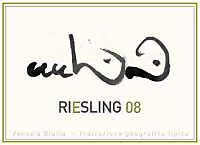
|
|
Riesling 2008 |
|
| Cecchini Marco (Friuli Venezia Giulia, Italy) | |
| Grapes: Riesling | |
| Price: € 18.00 | Score: |
| This Riesling shows a pale straw yellow color and nuances of straw yellow, very transparent. The nose reveals intense, clean, pleasing and refined aromas which start with hints of pear, melon and lemon followed by aromas of banana, apple, yellow rose, plum, hawthorn, mineral and hints of vanilla. The mouth has good correspondence to the nose, a crisp attack and however balanced by alcohol, good body, intense flavors, pleasing roundness. The finish is persistent with flavors of pear, lemon and melon. This Riesling ages for 12 months in cask. | |
| Food Match: Roasted fish, Roasted white meat, Stuffed pasta, Fish soups | |
News |
|
In this section are published news and information about events concerning the world of wine and food. Whoever is interested in publishing this kind of information can send us a mail to our address.
|
AquavitaeReview of Grappa, Distillates and Brandy |
|
|
| Distillates are rated according to DiWineTaste's evaluation method. Please see score legend in the "Wines of the Month" section. |
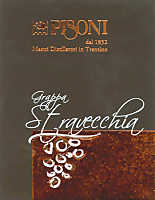
|
|
Grappa Stravecchia |
|
| Distilleria Pisoni (Trentino, Italy) | |
| Raw matter: Pomace of Grapes from Trentino | |
| Price: € 17.00 - 70cl | Score: |
| This grappa shows a pale amber yellow color, limpid and transparent. The nose reveals intense, clean, pleasing and refined aromas of prune, hazelnut, pear, vanilla, tobacco, chocolate and licorice, with almost imperceptible alcohol pungency. In the mouth has intense flavors, with perceptible alcohol pungency which tends to dissolve rapidly, good correspondence to the nose, pleasing roundness, balanced sweetness. The finish is persistent with flavors of prune, hazelnut and chocolate. This grappa is distilled in a batch bainmarie alembic still and is aged in barrique. Alcohol 40%. | |
Wine Parade |
|
|
| The best 15 wines according to DiWineTaste's readers. To express your best three wines send us an E-mail or fill in the form available at our WEB site. |
| Rank | Wine, Producer | |
|---|---|---|
| 1 |
| Brunello di Montalcino Vigneto Manachiara 2005, Tenute Silvio Nardi (Italy) |
| 2 |
| Arkezia Muffo di San Sisto 2004, Fazi Battaglia (Italy) |
| 3 |
| Barolo Cannubi Boschis 2005, Sandrone (Italy) |
| 4 |
| Confini 2007, Lis Neris (Italy) |
| 5 |
| Rosso Conero Riserva Grosso Agontano 2007, Garofoli (Italy) |
| 6 |
| Trento Brut Riserva Methius 2004, Dorigati (Italy) |
| 7 |
| Brunello di Montalcino 2006, Siro Pacenti (Italy) |
| 8 |
| Aglianico del Vulture Il Repertorio 2006, Cantine del Notaio (Italy) |
| 9 |
| Batàr 2008, Querciabella (Italy) |
| 10 |
| Soave Motto Piane 2008, Fattori (Italy) |
| 11 |
| Collio Sauvignon Ronco delle Mele 2010, Venica (Italy) |
| 12 |
| Brunello di Montalcino Progetto Prime Donne 2004, Donatella Cinelli Colombini (Italy) |
| 13 |
| Gran Masetto 2007, Endrizzi (Italy) |
| 14 |
| Franciacorta Pas Dosé Récemment Dégorgé 2006, Cavalleri (Italy) |
| 15 |
| Barolo Bussia 2001, Prunotto (Italy) |
| |||||||
Privacy Policy | |||||||


| Copyright © 2002-2024 Antonello Biancalana, DiWineTaste - All rights reserved |
| All rights reserved under international copyright conventions. No part of this publication and of this WEB site may be
reproduced or utilized in any form or by any means, electronic or mechanical, without permission in writing from DiWineTaste. |